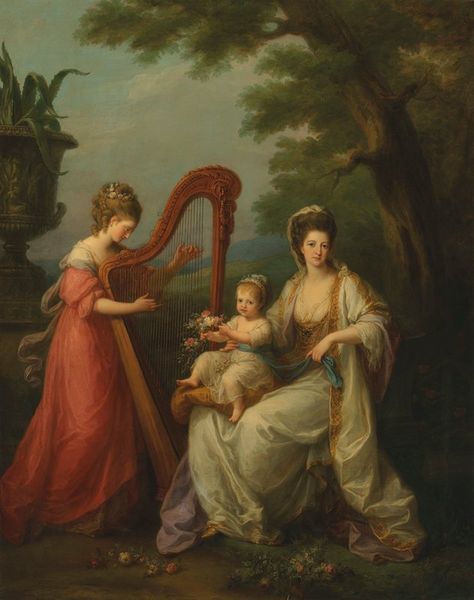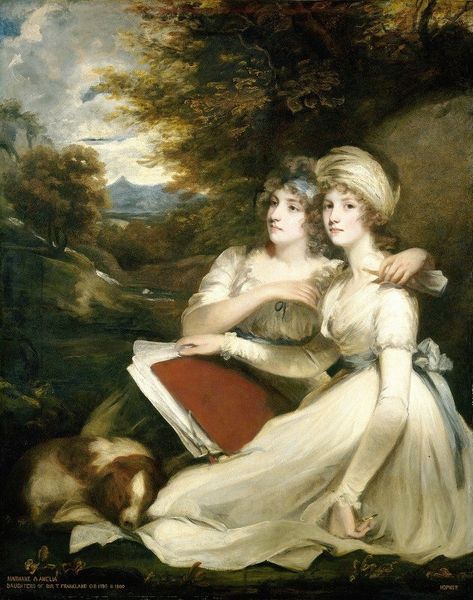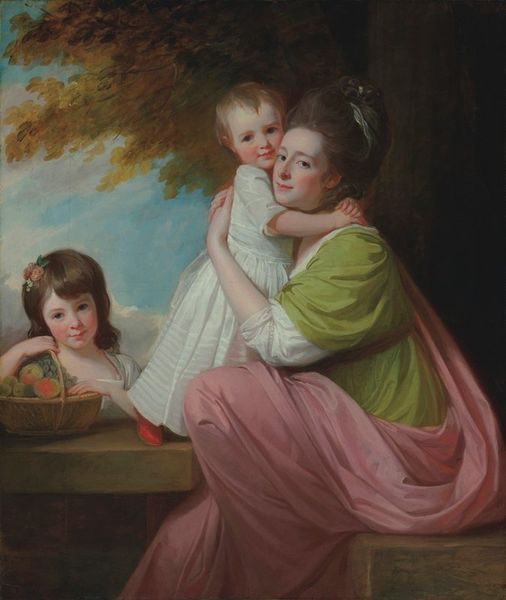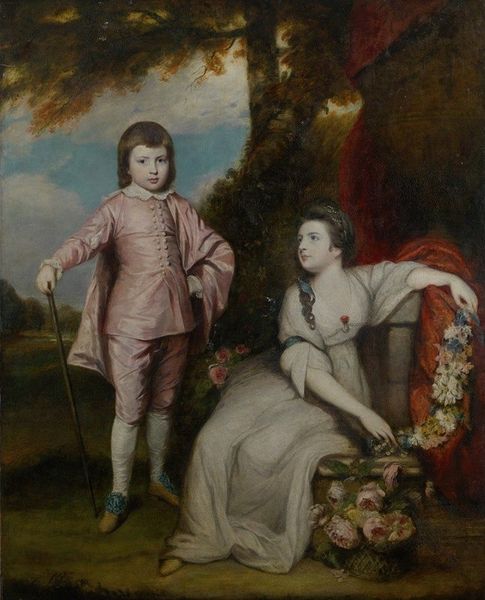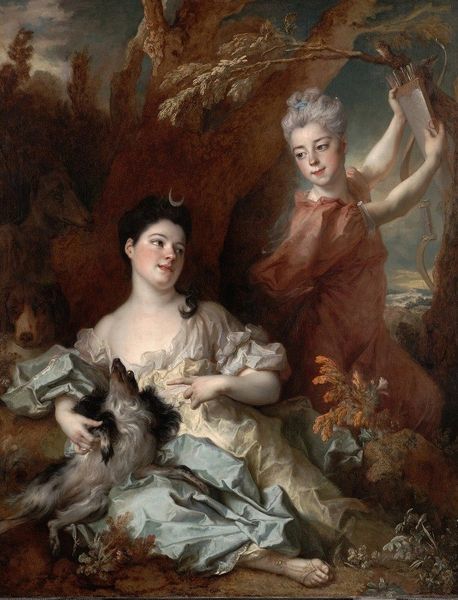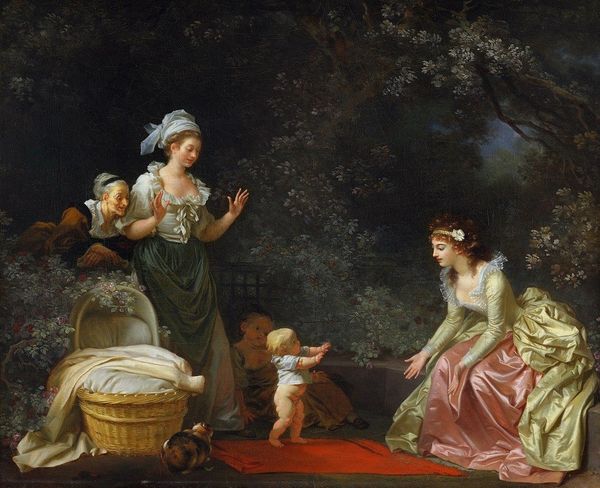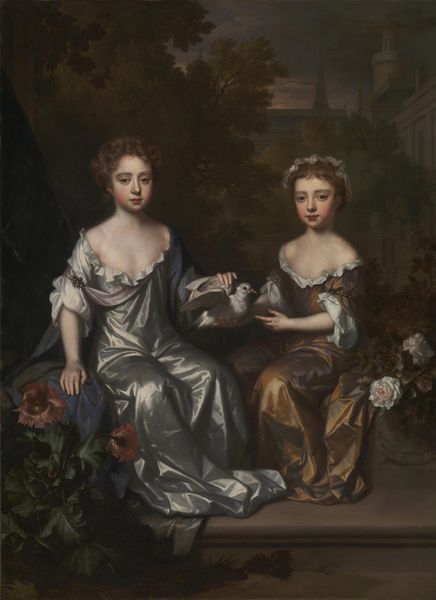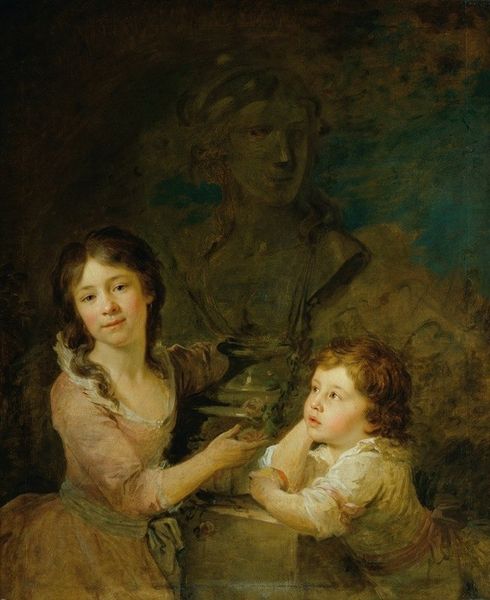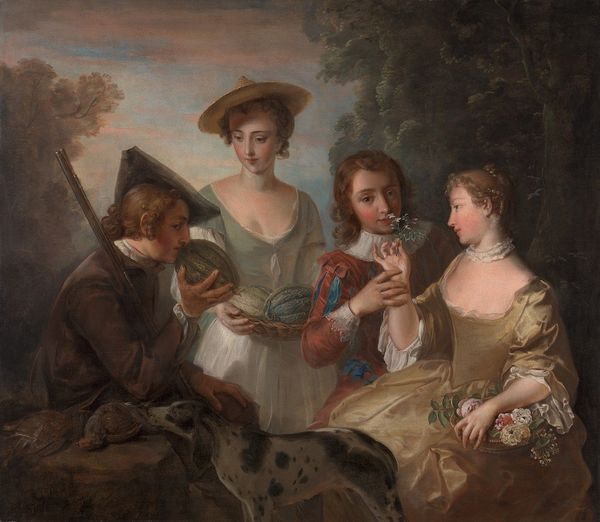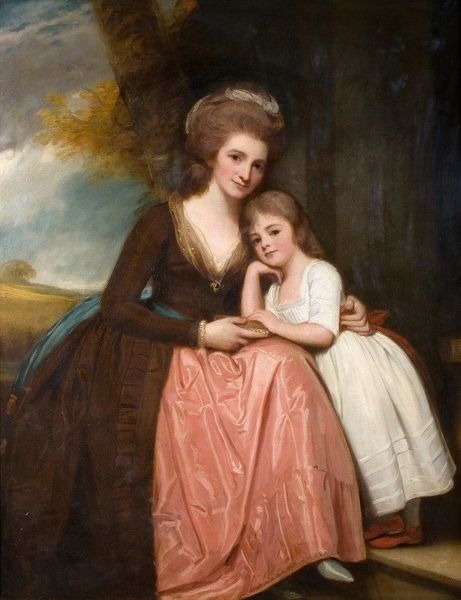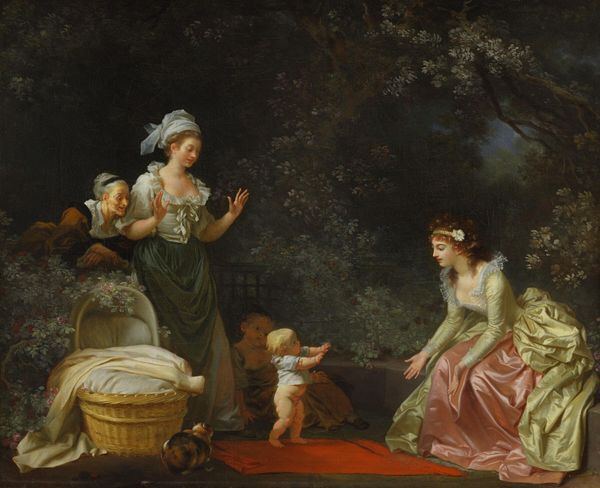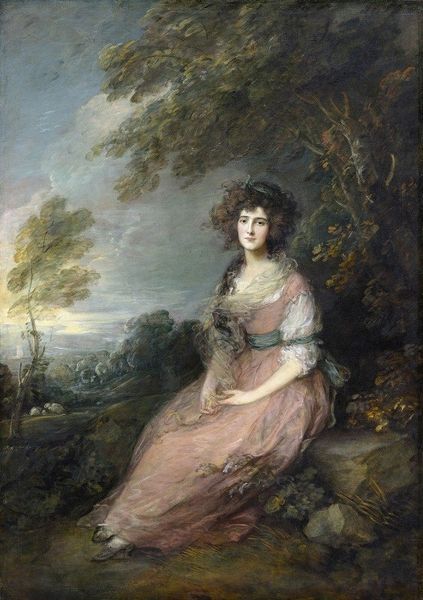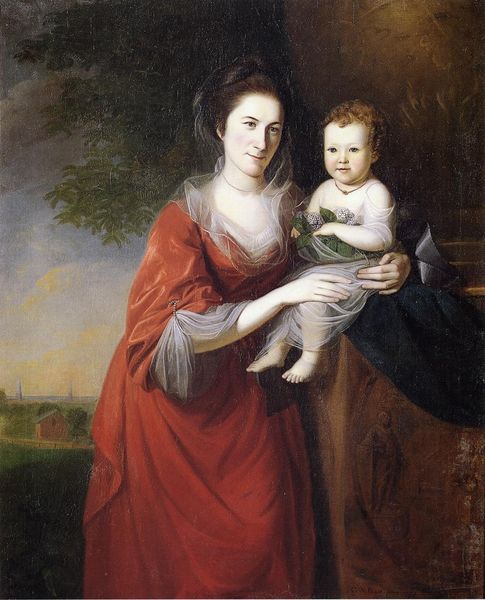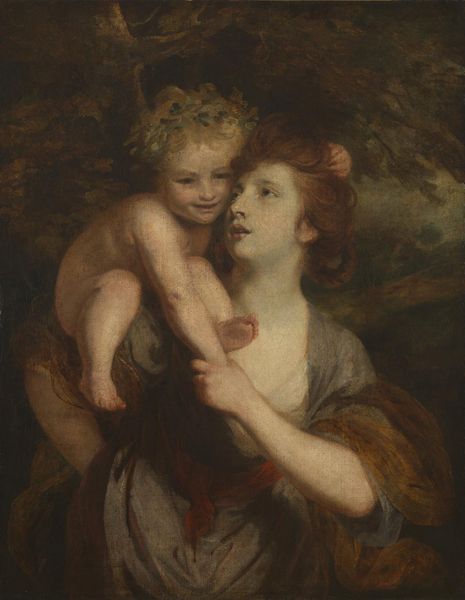
Copyright: Public Domain: Artvee
Curator: Here we have Angelica Kauffmann’s “Mrs. Hugh Morgan and Her Daughter,” painted around 1771 using oil paints. It’s fascinating to see how Kauffmann navigates the expectations of portraiture while also engaging with Neoclassical ideals of virtue and sensibility. Editor: Ah, yes! My immediate reaction is just how wonderfully sentimental this feels! Like a fleeting moment of pure, idealized connection, draped in this romantic haze... Look at that forlorn pup, nestled right into the bottom corner of the artwork, it’s a wonderful snapshot into how the bourgeoisie viewed their own existence in society. Curator: Exactly. Kauffmann was a master at subtly weaving narratives into her portraits. We need to understand the positioning of women at that time: Kauffmann portrays Mrs. Morgan as both a woman of society, suggested through her apparel, while she has also established herself through motherhood as an honorable member of the aristocratic community. By using conventions of history painting, Kauffmann elevated the status of the female sitter. Editor: True. Although one cannot ignore her almost subversive ability to use traditional aristocratic visual language to create new, inclusive depictions of women within society. Curator: The landscape backdrop is so indicative of the Romanticism movement—nature is symbolic here; it suggests innocence and freedom. It almost operates as a counterpoint to the very structured existence afforded to wealthy families in that era, especially women. How interesting it is to know the sitter, Mrs. Morgan, remarried after her husband's passing to Lieutenant Colonel George Morrison! It is easy to muse what type of freedoms she hoped to embrace once the societal and patriarchal confines had become liberated. Editor: What a delicious piece of gossip, that context provides so much additional narrative! It allows the viewer to not only analyze the aesthetic, but also create a story surrounding the piece of art! Also, do you think the mother-daughter dynamic reads a little too serious for a supposedly sentimental depiction? There's something so restrained about their connection. Curator: Absolutely, there's a certain formality that tempers the emotionality, as evidenced by their averted gazes. The painting provides a reflection on societal expectations that act almost like shackles that prevent natural familial connections from transpiring in earnest, but it also highlights their beauty and decorum within their society. Editor: The layers! Who knew so much complexity could blossom from just a single glimpse of canvas? I guess Kauffmann succeeded with “Mrs. Hugh Morgan and Her Daughter." What a treat to unwrap this together.
Comments
No comments
Be the first to comment and join the conversation on the ultimate creative platform.
